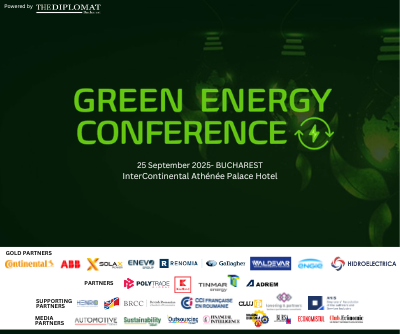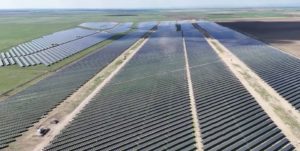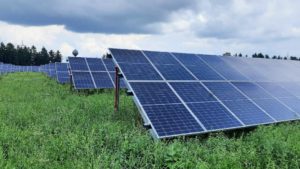Filip & Company: Analysis on legislation linked to the development of renewable energy projects

Authors: Ioana Roman (partner), Ilinca Porojan-Gheajă (associate)
The end of 2024 brought some interesting news for renewable energy projects, both in terms of clarifying the legal status of land belonging to compossessorate-type associations and as well as in terms of “unblocking” the dual use of grazing land for energy projects.
Clarifications on the status of land belonging to compossessorates
On 17 December 2024, Decision no. 102/2024 of the High Court of Cassation and Justice – Panel for the clarification of certain matters of law – was published in the Official Gazette (“Decision no. 102/2024”) in a matter on the compatibility between the establishment of a superficies right and the prohibition to alienate pastureland held by compossessorates and other forms of land use associations, provided for by Article 28 para. (7) of Law 1/2000 on the re-establishment of ownership over agricultural and forestry land (“Law 1/2000”), raised by the Maramureș Tribunal. In the case that has triggered the referral to the High Court of Cassation and Justice, a company had acquired the superficies right over certain plots owned by a compossessorate-type association, in exchange for a price paid to the budget of the compossessorate-type association. However, the registration of the superficies right in the land register was refused by the land registrar relying on the provisions of Article 28 para. (7) of Law 1/2000 that prohibit the alienation under any form whatsoever of land belonging to such types of associations.
The High Court of Cassation and Justice has ruled that the execution under authentic form (formă autentică) of a contract for the establishment of a superficies right over land belonging to associative forms is compatible with the prohibition set out in Law 1/2000, insofar as the scope and exercise of the superficies right does not contravene the forestry or agricultural regime and the bylaws of the associative forms. Furthermore, the Court also clarified that the land registrar may not refuse to register the superficies established by notarial deed, basing its refusal on the alienation prohibition stipulated by the law.
Decision 102/2024 thus opens the possibility for developers of renewable energy projects to secure such land by means of contracts that create a superficies right on the plots owned by compossessorates. However, this possibility is subject to the existing provisions and restrictions in the bylaws of the associations, and it is advisable to review these documents before entering into such contracts.
Clarification on the dual use of grazing land
With the entry into force of Law 254/2022 amending Law 18/1991, a legislative premiere was introduced, allowing the use of grazing land in a dual system, both for grazing and fodder production as well as for renewable energy production. However, given that the express provisions on the procedure for dual use had not been laid down, for the last two years, renewable energy project developers had to face the reluctance of public authorities.
This uncertainty was cleared on 23 December 2024, with the entry into force of Government Decision 1700/2024 (“GD 1700/2024”) amending and supplementing the Methodological Rules for the application of the provisions of Government Emergency Ordinance no. 34/2013 on the organization, management and exploitation of permanent pastures („Methodological Rules”). GD 1700/2024 introduced the long-awaited provisions on the dual use of grazing land.
Specifically, GD 1700/2024 clarifies how agricultural activities and electricity production can be carried out on pastures of maximum 50 ha, of quality classes III – V. Thus, according to the Methodological Rules, grazing and fodder production and electricity production activities can be carried out either by one and the same user who owns the land or by two different users. Insofar as the permanent grassland is part of the public/private domain of the State or of the administrative-territorial units and has been free-leased or rented, then the dual use requires the approval of the user of the grazing/hayland, provided that the proper exploitation of the grassland is not affected.
It should be noted that the Methodological Rules specify that the predominant use of grazing land is for grassland-specific agricultural activities, as defined in the Methodological Rules. Also, the contracts concluded for dual use must include clauses that regulate the agricultural area intended for carrying out agricultural activities, the grazing capacity, grazing period, the implementation of management measures for the grazing land established by pastoral planning, the area occupied by the renewable energy investment objectives and measures to ensure animal welfare conditions.
In what concerns the removal from the agricultural circuit of the area of land used for renewable energy production, the Methodological Rules stipulate that for the use of grazing land in dual system, the area occupied by the renewable energy development must be partially removed from the agricultural circuit for up to 20% of the total area of the 50 ha/investment. This area is defined as the sum of the areas for the structure poles, wind turbine foundations, inverters, transformer stations, electricity storage units, independent protective grounding and lightning protection systems, access roads, fencing, and other constructions/parts necessary for the operation of this facility, as set out in the technical design. Therefore, it seems that the Methodological Rules clarify the existing debate on how to remove grassland from the agricultural circuit for PV projects.
***
Against this background, the legislative framework for renewable energy projects seems to be gradually strengthening, thus encouraging investment in this field.















